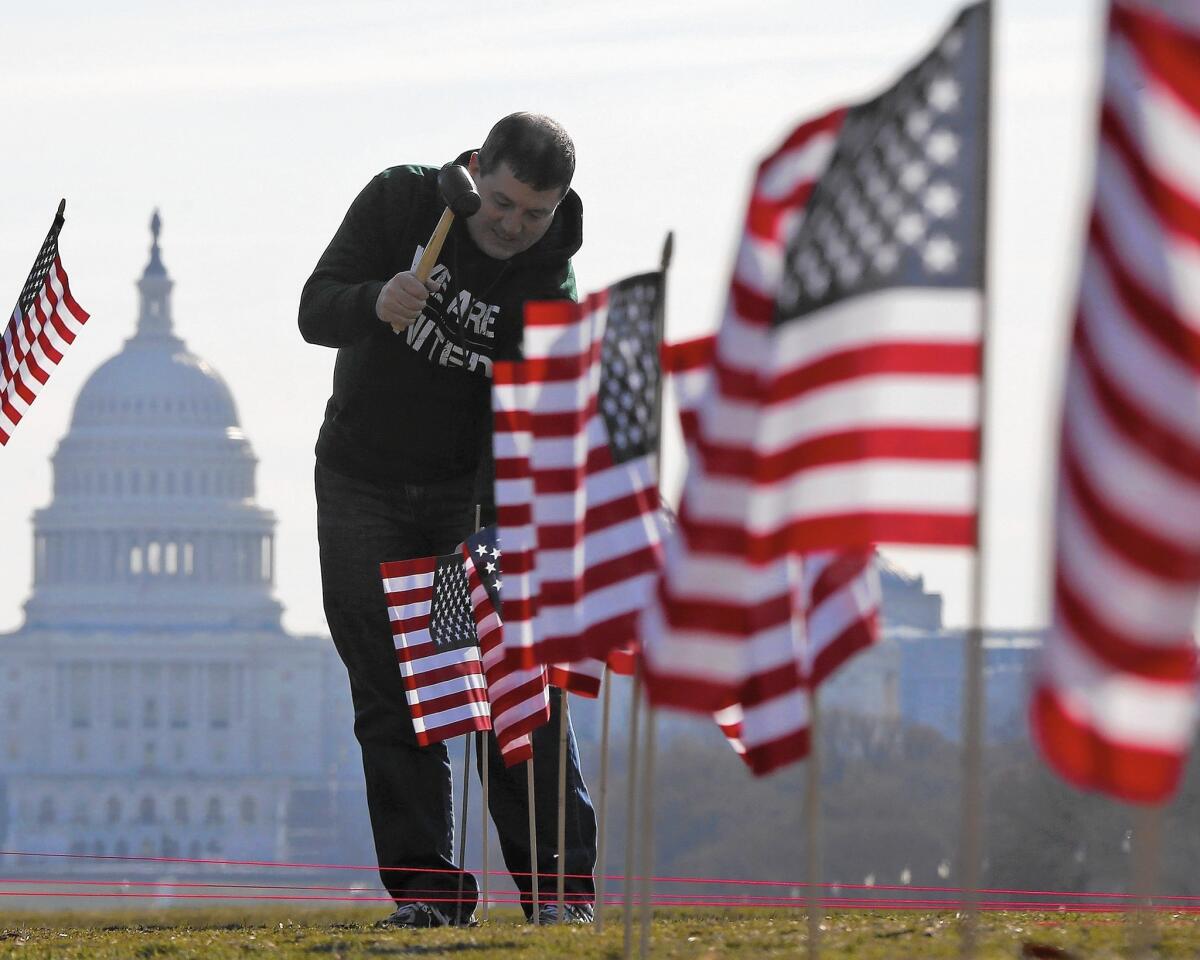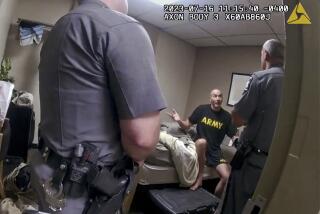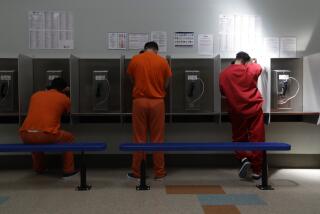Ex-troops with highest suicide risk often don’t qualify for mental care

The largest study to date of recent military and veteran suicides has identified two high-risk groups of former troops who are generally ineligible for the psychiatric care afforded to all others who served: those forced out of the military for misconduct and those who enlisted but were quickly discharged for other problems.
In each of those groups, an average of 46 of every 100,000 former service members committed suicide each year — more than double the rate for veterans with honorable discharges.
The findings are likely to spur debate over whether efforts to stem veteran suicides are targeting the right people and to strengthen calls to expand access to benefits and care — especially for those who blame post-traumatic stress disorder or other war-related problems for their misconduct and subsequent dismissals from the military.
“The problem is much bigger than the veterans we choose to help,” said Phillip Carter, a senior fellow at the nonpartisan Center for a New American Security who has followed the issue.
Many veterans with so-called bad discharges are cast off to local-level mental health services and charities, Carter said.
The suicide analysis, published Wednesday in JAMA Psychiatry, included all 3.9 million troops who served between 2001 and 2007. Using military and civilian death records, researchers tracked them until the end of 2009, finding a total of 5,041 suicides.
Service members who remained on active duty accounted for 3,106 suicides, an average annual rate of 15 per 100,000.
The annual rate jumped to 26 per 100,000 after separation from the military, for a total of 1,935 suicides in that group.
Of those suicides, 403 were among ex-service members whose discharges were “not honorable” — for a wide range of misconduct, from repeatedly disrespecting officers to felony convictions. An additional 380 occurred among veterans with “uncharacterized” discharges, the designation used for troops who leave in fewer than 180 days for a variety of nondisciplinary reasons.
Mark Reger, a Defense Department researcher who led the study, said premature departure from the military is often synonymous with substance abuse, legal problems, psychiatric trouble or other suicide risk factors.
“It may be useful to target prevention at those who separate early,” Reger said.
But officials at the U.S. Department of Veterans Affairs said they were bound by eligibility rules set by Congress.
That does not stop the agency’s crisis hotline and medical centers from lining up local mental health providers for former service members who don’t qualify for VA care, the officials pointed out.
“We still need to work with them the best we can,” said Caitlin Thompson, who heads VA suicide prevention efforts.
Since World War II, the VA has been responsible for determining who is eligible for healthcare and benefits. Ex-service members who were enlisted for less than two years qualify only if they have disabilities related to their service.
Those with dishonorable discharges are not eligible unless they can prove they were insane at the time of their crimes. Former troops with other types of less-than-honorable discharges must apply for veteran status, but fewer than 10% do.
Of those, fewer than a quarter succeed, according to a 2007 study by a congressional commission.
More than 140,000 troops have left the military since 2000 with less-than-honorable discharges, according to the Pentagon.
Veterans groups have recently taken up the cause. They point to a 2010 study showing that among Marines deployed to war, those diagnosed with PTSD were 11 times more likely to be kicked out for misconduct.
“They are specifically being excluded from access to healthcare,” said Bradford Adams, a lawyer with Swords to Plowshares, a veterans service group based in San Francisco.
Congress considered but failed to a pass a bill last year that would have upgraded certain discharges to make more veterans eligible for care. In September, then-Defense Secretary Chuck Hagel directed the military to factor in PTSD when determining discharge status.
Traditionally, the military suicide rate has been about half that in the civilian world. But it surged and caught up over the course of the recent wars and has remained elevated.
The explanation that once seemed obvious — the stress of combat — is no longer seen as a primary cause and may not be a significant factor at all. More than half of military suicides have been among service members who never deployed to war.
The current study found no significant difference in suicide rates between those who deployed and those who did not.
A growing body of evidence indicates that much of the suicide problem is related to preexisting psychological problems that service members managed to hide from recruiters.
Researchers said they felt certain that at least some of those were the veterans who took their own lives after troubled stints of fewer than 180 days on active duty.
Twitter: @AlanZarembo
More to Read
Start your day right
Sign up for Essential California for news, features and recommendations from the L.A. Times and beyond in your inbox six days a week.
You may occasionally receive promotional content from the Los Angeles Times.







